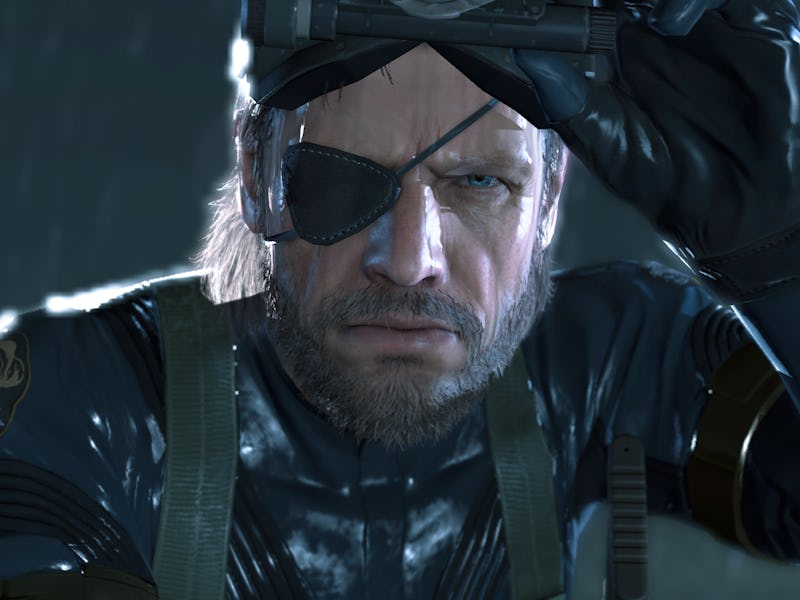Metal Gear’s Most Underrated Game Deserves a Second Chance
Metal Gear Solid V: Ground Zeroes is better than you remember.

Metal Gear Solid V: Ground Zeroes is a strange beast, not quite a tech demo for The Phantom Pain but not quite a full game in its own right either. As fans were chomping at the bit for the next Metal Gear Solid in 2014 Ground Zeroes met with a muted reception upon release, not quite fulfilling the meaty experience that everyone wanted. Because of that, Ground Zeroes has gone tremendously underappreciated for all these years. Yes, it serves as the prologue to The Phantom Pain, but it’s one of the most thematic pieces of content the Metal Gear series has ever seen. It also marked a major turning point in both the franchise’s gameplay and its willingness to tackle some truly horrific story elements.
Trying to explain how the Metal Gear series fits together feels like an impossible task, but essentially Ground Zeroes takes place in between the events of Peace Walker and The Phantom Pain. Two major characters from Peace Walker — Paz and Chico — have been captured by the American military and are imprisoned in a black site known as Camp Omega. Big Boss’ task is to infiltrate the black site and extract the two before America gains intel that Big Boss and Mother Base have access to nukes.
While Camp Omega is a relatively small area, there’s a ton of freedom in how to approach objectives.
The main Ground Zeroes story can be completed in just an hour or two, but the game hides some surprising depth under that initial veneer. The major gameplay innovations of the fifth entry were first present in Ground Zeroes, giving players incredible freedom in how they approached the experience. You know your objective, but how you get there is entirely up to you. You can take the violent approach, or you can capture and interrogate soldiers to gain valuable intel that will help you infiltrate more stealthily. Ground Zeroes was the first realization of an open-world Metal Gear Solid, and it simply worked.
A big part of that is the super location of Camp Omega itself. It may seem like a mere prison, but the more you investigate it, the more you find out it’s a terribly violent internment camp for prisoners of war. Aesthetically Omega is one of the most interesting locations the series has seen, absolutely cloaked in moody lighting and weather that draws you into the experience.
Where Camp Omega really gets fascinating, however, is in the seven “Side Ops” missions that open up after the main story. Some of these are on the sillier side, like the mission where you run around as the super-powered cyborg Raiden. Others are presented as “rooted in history” missions that sometimes draw on elements of real history, but the actual story in the missions conflicts with canon. That being said, there are details you can only find in these Side Ops that delve into the operation and history behind Camp Omega. There are also some wild fan theories out there about how Ground Zeroes was actually the catalyst for a time paradox that plays out through The Phantom Pain.
Side Ops are where Ground Zeroes’ gameplay really shines, allowing for some interesting spins on mechanics.
Past Metal Gear games certainly had weighty themes, but there was still a lingering goofiness about everything. That’s almost entirely gone in Ground Zeroes, as Kojima isn’t afraid to dive full force into some truly horrific subject matter, including torture, mutilation, psychological trauma, and more. Chico has bolts put through his feet when you find him, and you can find an audio tape that depicts a horrifying torture scene. It’s truly difficult to listen to. Then there’s that unforgettable ending with two bombs that have been implanted in a certain character.
Interestingly, Ground Zeroes is where we really start to see Big Boss’ mental shift to a psychopathic tyrant. Big Boss sees himself as a “hero,” but ultimately he’s not saving Paz and Chico out of concern for their safety, but as a safeguard to keep his extreme militarization secret. The end of Ground Zeroes even sees Big Boss ordering his troops to destroy evidence, sink a Metal Gear to the bottom of the ocean, and more. You can see the cracks in Boss’ psyche starting to form, see him trying to justify his increasingly villainous actions.
Ground Zeroes marked a massive tonal shift in the series, with an unbelievably dark narrative that would carry over into The Phantom Pain.
Although the game is set in the 1970s there are some distinct parallels to the War on Terror, and how Camp Omega was founded because of a heinous act of terrorism. Kojima almost always loops in some kind of commentary on the current state of the world with his games, and that shines through in Ground Zeroes.
Nine years later, it’s clear that Ground Zeroes didn’t have the impact its developers were hoping for, and Kojima himself even revealed that it was an “experiment” to test out an episodic format for Metal Gear. Obviously, Kojima’s well-documented struggles with Konami had a hand in how the franchise turned out, but it’s fascinating to think of how different Metal Gear could be if Ground Zeroes had been a massive success. The small title may not be as esteemed as other entries, but it remains one of the most tightly designed stealth-action games out there.
This article was originally published on